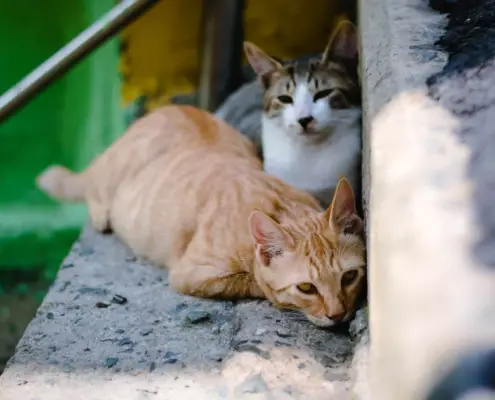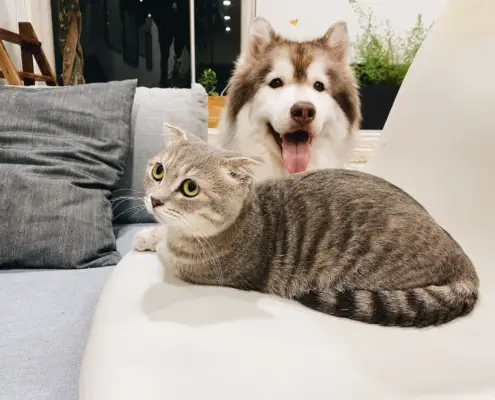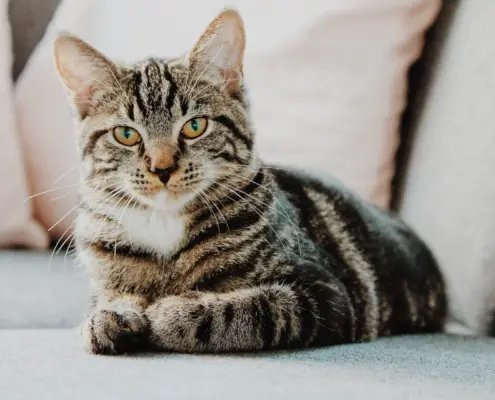
Cats have long been known for their mysterious and enigmatic behavior. From their graceful movements to their independent nature, they have captivated humans for centuries. One behavior that often leaves cat owners puzzled is their tendency to stare. Whether it’s a prolonged gaze at their surroundings or a direct stare into their owner’s eyes, cat staring can be both intriguing and perplexing. In this article, we will explore the fascinating reasons behind why cats stare and how it serves as a form of communication between cats and humans.
Common Behaviors of Cats
Before delving into the realm of cat staring, it is important to understand some common behaviors exhibited by our feline friends. Cats are known for their agility, curiosity, and hunting instincts. They have a keen sense of hearing and an acute sense of vision, allowing them to be alert to their surroundings. Additionally, cats are crepuscular animals, meaning they are most active during dawn and dusk. These natural behaviors are important to keep in mind when trying to decipher the reasons behind their staring habits.
The Fascination of Cat Staring
One of the most captivating aspects of cat behavior is their ability to stare. Cats have a reputation for being great observers, and their staring behavior is a testament to this. Whether they are staring at a moving object, a fellow feline, or even their human companions, cats seem to have an innate ability to focus their attention on their target. This intense gaze can be both mesmerizing and intimidating, leaving us to wonder what exactly goes on in their minds.
Biological Reasons Behind Cat Staring
The act of staring is deeply rooted in a cat’s biology. It serves as a survival mechanism in the wild, where their ancestors relied on their keen observation skills to detect potential threats and prey. The fixed gaze allows cats to assess their environment, evaluate potential dangers, and plan their next move. Additionally, cats have a unique structure in their eyes known as the tapetum lucidum, which enhances their night vision. This adaptation enables them to focus their gaze on objects even in low light conditions, further enhancing their ability to observe their surroundings.
Communication Through Eye Contact in Cats
While staring is primarily a survival instinct, it also serves as a means of communication between cats. In the feline world, eye contact plays a crucial role in establishing dominance, expressing affection, and conveying intentions. A direct, unwavering stare from one cat to another may be interpreted as a challenge or a sign of aggression. On the other hand, a slow blink or a soft gaze can indicate trust and contentment. Understanding the nuances of feline eye contact can help cat owners better interpret their pet’s intentions and emotions.
Staring as a Form of Cat-Human Interaction
Cats are known for their ability to form deep bonds with their human companions. Staring can be a way for cats to establish a connection with their owners and seek attention or affection. When a cat stares at its owner, it may be a sign of trust, curiosity, or a request for interaction. It is important for cat owners to pay attention to their pet’s body language and respond accordingly. Engaging in gentle play, offering treats, or simply acknowledging their presence can help nurture the bond between cats and humans.
Myths and Misconceptions About Cat Staring
There are several myths and misconceptions surrounding cat staring that need to be debunked. One common misconception is that cats stare as a way of asserting dominance. While eye contact can be a display of dominance in the feline world, it is not always the case with humans. Cats may stare for various reasons, including curiosity, seeking attention, or simply observing their surroundings. It is important not to jump to conclusions and instead consider the context and other accompanying behaviors when interpreting a cat’s stare.
How to Interpret Your Cat’s Stare
Interpreting a cat’s stare can be challenging, but there are certain cues that can help decipher their intentions. A relaxed cat with dilated pupils and a soft gaze is likely expressing contentment and trust. On the other hand, a tense posture, narrowed eyes, and a fixed stare may indicate aggression or discomfort. It is essential to observe the cat’s overall body language, including tail position, ear posture, and vocalizations, to get a holistic understanding of their emotions. By paying attention to these cues, cat owners can better understand their feline companion’s needs and provide appropriate care and attention.
Tips for Dealing with Staring Cats
If you find yourself with a staring cat, there are a few tips to keep in mind to ensure a positive interaction. First and foremost, avoid staring back at your cat, as this can be perceived as a challenge or threat. Instead, maintain a relaxed posture and use soft vocalizations to communicate with your cat. Engage in playtime or provide environmental enrichment to redirect your cat’s attention and energy. If you are unsure about your cat’s stare or are concerned about their behavior, consult with a veterinarian or a professional animal behaviorist for guidance.
The Beauty of Feline Communication
In conclusion, cat staring is a complex behavior rooted in a cat’s biology and serves as a means of communication. Whether it’s an instinctual survival mechanism or a way to establish a connection with humans, staring plays a significant role in the feline world. Understanding the reasons behind cat staring and interpreting their intentions can help strengthen the bond between cats and their human companions. By appreciating the beauty of feline communication, we can further enhance our relationship with these fascinating creatures.
If you enjoyed my article, I would appreciate you sharing it with your network.

Sima Ndlebe
Sima writes for CatBuzz. He is interested in Cats, Health and Fitness, and Entrepreneurship.
Published: 5 December 2023



